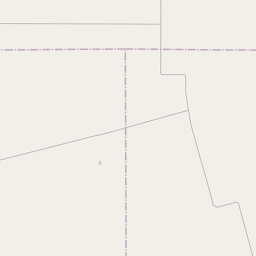A. J. Warren Building
Historical marker location:






Farmer and rancher A. J. Warren (1870-1933) moved to this area in 1902 and helped to organize Lynn County in 1903. He built this 2-story brick and concrete edifice in 1925 to house the First National Bank, chartered that year. Competition from another bank led to merger of the two and abandonment of this building in 1926. Various stores and offices occupied the structure before it was acquired by the city of O'Donnell in 1973. It became the O'Donnell Museum in 1974.
Recorded Texas Historic Landmark - 1975
As one of the most visible programs of the Texas Historical Commission (THC), historical markers commemorate diverse topics in Texas history, including: the history and architecture of houses, commercial and public buildings, religious congregations, and military sites; events that changed the course of local and state history; and individuals who have made lasting contributions to the state, community organizations, and businesses.
The cattle industry played a significant role in the development of Texas, with cowboys driving cattle from Texas to railheads in Kansas during the late 1800s and early 1900s.
The first European Americans to arrive in the area were primarily cattle ranchers and farmers. In 1876, the Texas legislature established Lynn County, which was named in honor of Judge John W. Lynn, who served as secretary of state during the Republic of Texas era. The county was officially organized in 1903, with Tahoka as its county seat.
The early years of Lynn County were characterized by the development of agriculture and cattle ranching. The region's fertile soil and ample water supply allowed farmers to grow various crops, including cotton, corn, sorghum, and wheat. Cattle ranching also played a significant role in the county's economy, with many ranchers utilizing the open range to graze their herds.
Over time, Lynn County grew and prospered. The discovery of oil in the early 20th century brought new economic opportunities, attracting both workers and businesses to the area. Oil-related industries developed, and the county experienced a period of growth and prosperity.
Today, Lynn County continues to be known for its agriculture, oil production, and close-knit communities. The county's residents embrace their rich history while also adapting to modern advancements and industries. With its scenic landscapes, small-town charm, and thriving agricultural sector, Lynn County remains an important part of West Texas's heritage.
Lynn County Timeline
This timeline provides a concise overview of the key events in the history of Lynn County, Texas.
- 1876: Lynn County is established and named after Judge William Lynn.
- 1880: The town of Tahoka is founded as the county seat.
- 1902: The Santa Fe Railroad extends its line to Tahoka, boosting the local economy.
- 1930s: Lynn County faces challenges due to the Dust Bowl and the Great Depression.
- 1940s: Oil and gas discoveries lead to economic growth and increased population.
- 1970s: Lynn County experiences an agricultural boom, with cotton becoming a major crop.
- 1990s: The Lynn County Courthouse is restored, preserving the county's historical architecture.
- 2010s: Lynn County continues to be an agricultural hub, with farming and ranching as the main industries.